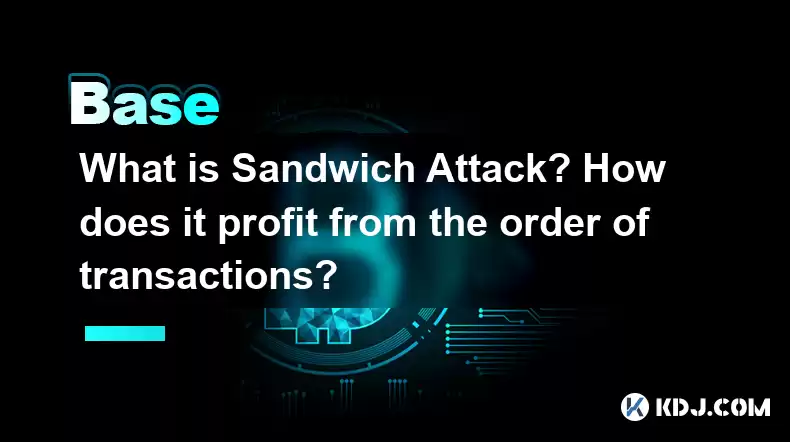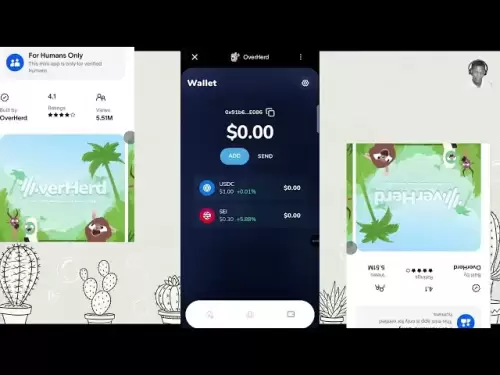-
 Bitcoin
Bitcoin $114100
-0.14% -
 Ethereum
Ethereum $3635
-0.73% -
 XRP
XRP $2.949
-2.85% -
 Tether USDt
Tether USDt $0.9999
-0.03% -
 BNB
BNB $760.3
-0.78% -
 Solana
Solana $163.8
-2.77% -
 USDC
USDC $0.9998
-0.04% -
 TRON
TRON $0.3323
-0.57% -
 Dogecoin
Dogecoin $0.2004
-2.99% -
 Cardano
Cardano $0.7245
-2.87% -
 Hyperliquid
Hyperliquid $37.52
-3.75% -
 Stellar
Stellar $0.3915
-3.58% -
 Sui
Sui $3.416
-2.20% -
 Bitcoin Cash
Bitcoin Cash $559.5
-0.84% -
 Chainlink
Chainlink $16.41
-2.16% -
 Hedera
Hedera $0.2406
-1.78% -
 Ethena USDe
Ethena USDe $1.001
0.00% -
 Avalanche
Avalanche $22.13
-1.98% -
 Litecoin
Litecoin $117.8
-4.32% -
 UNUS SED LEO
UNUS SED LEO $8.989
0.01% -
 Toncoin
Toncoin $3.183
-5.09% -
 Shiba Inu
Shiba Inu $0.00001214
-1.97% -
 Uniswap
Uniswap $9.654
-1.71% -
 Polkadot
Polkadot $3.616
-1.18% -
 Monero
Monero $291.6
-2.66% -
 Dai
Dai $0.9999
0.00% -
 Bitget Token
Bitget Token $4.310
-1.10% -
 Cronos
Cronos $0.1382
-1.93% -
 Pepe
Pepe $0.00001021
-3.40% -
 Aave
Aave $257.9
-1.42%
What is Sandwich Attack? How does it profit from the order of transactions?
Sandwich attacks exploit DEXs' decentralized nature, using strategically placed buy/sell orders to manipulate transaction prices, profiting from the inflated buy and deflated sell prices of the targeted trade. Mitigation involves using limit orders, adjusting slippage tolerance, and employing advanced transaction ordering.
Mar 05, 2025 at 08:18 am

Key Points:
- Sandwich attacks exploit the decentralized nature of blockchain transactions to manipulate order execution for profit.
- Attackers place large buy and sell orders around a target's trade, artificially inflating the price the target pays and deflating the price they receive.
- Sophisticated tools and strategies are employed to identify and target vulnerable transactions.
- Prevention relies on understanding the mechanics of the attack and employing various mitigation strategies.
- Regulatory efforts and technological advancements are ongoing to combat sandwich attacks.
What is a Sandwich Attack?
A sandwich attack is a type of manipulation in decentralized exchanges (DEXs) and other crypto trading platforms. It exploits the public and transparent nature of blockchain transactions. An attacker strategically places their own orders – a "buy" order before and a "sell" order after – the target's trade, effectively "sandwiching" it. This allows the attacker to profit from the price manipulation caused by their own orders. The success hinges on the attacker's ability to predict and capitalize on the target's transaction.
How Does it Profit from the Order of Transactions?
The profit mechanism relies entirely on manipulating the order of transactions. The attacker identifies a large, desirable trade a user is about to make. They then submit a large buy order immediately before the target's order, artificially inflating the price. The target executes their trade, buying at the inflated price. Finally, the attacker sells their holdings immediately after the target's transaction, profiting from the price difference created. The entire process occurs within milliseconds, making it difficult to detect in real-time.
Identifying Vulnerable Transactions
Attackers use various methods to identify potential targets. They may monitor the mempool (the pool of unconfirmed transactions) for large or unusual trades. They might use bots to scan for specific trading patterns indicative of whales (large holders) making trades. Smart contracts with predictable behavior are also prime targets. Sophisticated algorithms can detect these patterns, allowing attackers to anticipate user actions and strategically place their orders.
The Attacker's Tools and Strategies
Successful sandwich attacks require advanced tools and a keen understanding of blockchain technology and market dynamics. This includes access to high-speed trading infrastructure (low latency connections), sophisticated algorithms for identifying target transactions, and automated trading bots to execute orders quickly and efficiently. The attackers need to be able to predict price movements accurately enough to profit from the brief manipulation.
How to Mitigate the Risk of Sandwich Attacks
While completely eliminating the risk is difficult, several mitigation strategies exist.
- Transaction Ordering: Utilizing advanced transaction ordering techniques can help to avoid the attacker's manipulation. This might involve using technologies that prioritize transaction inclusion or employing techniques to obfuscate the size and timing of your trade.
- Slippage Tolerance: Setting a higher slippage tolerance can help protect against unexpected price movements caused by the attacker's actions. Slippage refers to the difference between the expected price and the actual execution price of a trade. A higher tolerance allows the trade to execute even with significant price changes.
- Using Limit Orders: Limit orders, which specify a maximum price to buy or a minimum price to sell, can help to protect against significant price manipulation. However, they do not provide complete protection.
- Monitoring and Detection: Regularly monitoring your trading activity for unusual price fluctuations can help identify potential sandwich attacks. However, this requires diligence and can be difficult to do in real-time.
The Role of Decentralized Exchanges (DEXs)
DEXs, due to their decentralized nature, are particularly vulnerable to sandwich attacks. The lack of a central authority to regulate trading and enforce order execution makes them an attractive target. However, some DEXs are implementing advanced technologies to improve transaction ordering and reduce the likelihood of these attacks.
Regulatory and Technological Advancements
Regulators worldwide are beginning to address the challenges posed by sandwich attacks. These efforts may include improved regulatory frameworks for decentralized exchanges and initiatives to enhance the security of blockchain transactions. Technological solutions such as advanced transaction ordering mechanisms and improved detection algorithms are also being developed.
Common Questions and Answers:
Q: Can I completely prevent a sandwich attack? A: No, completely preventing a sandwich attack is virtually impossible. The decentralized and transparent nature of blockchains makes it extremely difficult to completely eliminate the possibility. However, employing the mitigation strategies mentioned above significantly reduces the likelihood and impact.
Q: Are all DEXs equally vulnerable? A: No, the vulnerability varies between DEXs. DEXs with more sophisticated order-matching engines and better transaction ordering mechanisms are generally less susceptible. The specific technologies employed by a DEX play a crucial role in its resistance to sandwich attacks.
Q: What is the best way to detect a sandwich attack? A: Detecting a sandwich attack in real-time is difficult. Post-trade analysis, by comparing the price you paid/received with the market price at the time of the transaction, can help identify suspicious activity. However, this is only useful retrospectively.
Q: Who is responsible for preventing sandwich attacks? A: The responsibility is shared. DEX developers need to implement robust security measures. Users should employ mitigation strategies. Regulators need to establish clear guidelines and enforce security standards. Ultimately, it's a collaborative effort.
Q: How frequently do sandwich attacks occur? A: The frequency is difficult to pinpoint precisely due to the clandestine nature of these attacks. However, anecdotal evidence and reported cases suggest they are a relatively common occurrence, particularly targeting large transactions on popular DEXs.
Disclaimer:info@kdj.com
The information provided is not trading advice. kdj.com does not assume any responsibility for any investments made based on the information provided in this article. Cryptocurrencies are highly volatile and it is highly recommended that you invest with caution after thorough research!
If you believe that the content used on this website infringes your copyright, please contact us immediately (info@kdj.com) and we will delete it promptly.
- Acapulco Crafts in Crisis: Sales Plummet, Artisans Struggle
- 2025-08-06 14:30:12
- SEC, Crypto & Bitwise CIO: A New Dawn?
- 2025-08-06 14:35:11
- Coinbase, Financing, and the Crypto Market: Navigating Choppy Waters in NYC Style
- 2025-08-06 12:50:11
- Bitcoin in Indonesia: Crypto Education and Economic Strategy
- 2025-08-06 12:50:11
- DeriW Mainnet: Zero Gas Fees Revolutionize On-Chain Derivatives Trading
- 2025-08-06 10:30:11
- IOTA, Cloud Mining, and Eco-Friendly Crypto: A New York Investor's Take
- 2025-08-06 10:30:11
Related knowledge

What is the difference between CeFi and DeFi?
Jul 22,2025 at 12:28am
Understanding CeFi and DeFiIn the world of cryptocurrency, CeFi (Centralized Finance) and DeFi (Decentralized Finance) represent two distinct financia...

How to qualify for potential crypto airdrops?
Jul 23,2025 at 06:49am
Understanding What Crypto Airdrops AreCrypto airdrops refer to the distribution of free tokens or coins to a large number of wallet addresses, often u...

What is a crypto "airdrop farmer"?
Jul 24,2025 at 10:22pm
Understanding the Role of a Crypto 'Airdrop Farmer'A crypto 'airdrop farmer' refers to an individual who actively participates in cryptocurrency airdr...

What is the difference between a sidechain and a Layer 2?
Jul 20,2025 at 11:35pm
Understanding the Concept of SidechainsA sidechain is a separate blockchain that runs parallel to the main blockchain, typically the mainnet of a cryp...

What is the Inter-Blockchain Communication Protocol (IBC)?
Jul 19,2025 at 10:43am
Understanding the Inter-Blockchain Communication Protocol (IBC)The Inter-Blockchain Communication Protocol (IBC) is a cross-chain communication protoc...

How does sharding improve scalability?
Jul 20,2025 at 01:21am
Understanding Sharding in BlockchainSharding is a database partitioning technique that is increasingly being adopted in blockchain technology to enhan...

What is the difference between CeFi and DeFi?
Jul 22,2025 at 12:28am
Understanding CeFi and DeFiIn the world of cryptocurrency, CeFi (Centralized Finance) and DeFi (Decentralized Finance) represent two distinct financia...

How to qualify for potential crypto airdrops?
Jul 23,2025 at 06:49am
Understanding What Crypto Airdrops AreCrypto airdrops refer to the distribution of free tokens or coins to a large number of wallet addresses, often u...

What is a crypto "airdrop farmer"?
Jul 24,2025 at 10:22pm
Understanding the Role of a Crypto 'Airdrop Farmer'A crypto 'airdrop farmer' refers to an individual who actively participates in cryptocurrency airdr...

What is the difference between a sidechain and a Layer 2?
Jul 20,2025 at 11:35pm
Understanding the Concept of SidechainsA sidechain is a separate blockchain that runs parallel to the main blockchain, typically the mainnet of a cryp...

What is the Inter-Blockchain Communication Protocol (IBC)?
Jul 19,2025 at 10:43am
Understanding the Inter-Blockchain Communication Protocol (IBC)The Inter-Blockchain Communication Protocol (IBC) is a cross-chain communication protoc...

How does sharding improve scalability?
Jul 20,2025 at 01:21am
Understanding Sharding in BlockchainSharding is a database partitioning technique that is increasingly being adopted in blockchain technology to enhan...
See all articles

























































































